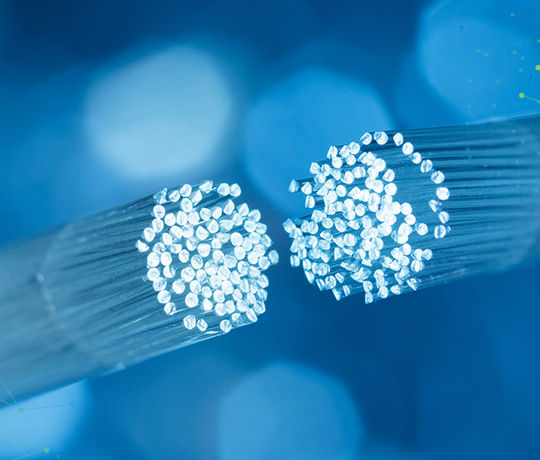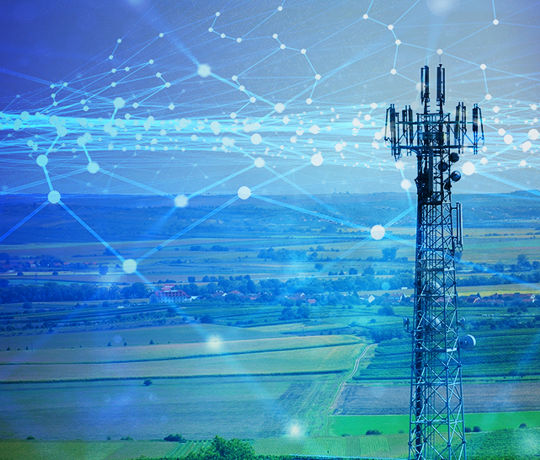Search results
This webinar is in Italian Dopo aver discusso e dimostrato le basi dell’introduzione dell’FTTH nella prima parte, in questa seconda parte della serie ci concentreremo sull’attivazione dei clienti finali e sulla risoluzione dei problemi. Saranno evidenziati problemi o errori tipici che possono emergere nel livello fisico e / o di trasporto della rete. Verranno inoltre presentati strumenti di misurazione per l’attivazione dei clienti finali per portare a termine la connessione senza problemi né bisogno di una seconda visita. I partecipanti impareranno a individuare facilmente gli errori e i problemi più comuni che possono emergere durante il ciclo di vita di una rete FTTH.
ResourcesTiming and synchronization (T&S) are becoming a hot topic for 5G network rollouts. Learn why timing is so critical in these networks and how proactive testing will play an important role in ensuring timing and synchronization requirements are met. Key takeaways: 5G services leading the way for new T&S requirements and technologies Key T&S challenges that 5G brings The ever-evolving 5G transport network – why timing becomes critical Standards and test applications to ensure reliable high bandwidth services
ResourcesThis educational webinar will cover the basics of testing and troubleshooting fiber optics with a focus on critical parameters for standard singlemode fiber. Join speaker Kevin Peres as he walks you through the fundamentals (e.g., understanding optical return loss) to tackle more advanced subjects such as identifying and locating fiber-related faults with an OTDR that leverages iOLM technology. Connectors and their impact on network health will also be covered. Key takeaways: Fiber 101 Splice and connector critical parameters OTDR/iOLM setup Trace interpretation and advanced troubleshooting
ResourcesThis webinar is in Italian L’introduzione dell’FTTH (fiber to the home)è un tema di grande attualità, legato alla crescente domanda da parte dei clienti di una maggiore larghezza di banda, che sia per supportare le smart TV, lo streaming di video/OTT, multischermi o il lavoro da casa. La diffusione dell’FTTH porta con sé nuove sfide e problematiche che emergono durante le fasi di costruzione, attivazione e manutenzione delle reti. Per tutti coloro che sono da poco entrati nel settore, o che necessitano semplicemente di un ripasso, siamo lieti di poter offrire questa serie di webinar di formazione irrinunciabili sulle migliori pratiche legate all’FTTH. Il nostro primo webinar sarà incentrato sulle basi della fiber to the home, affrontandone le problematiche e offrendo consigli per aiutare tecnici e manager a gestire al meglio quest’importante cambiamento e sfruttare al massimo i suoi benefici economici. Tenete d’occhio la vostra casella di posta elettronica: vi arriveranno ulteriori informazioni sul secondo webinar della serie, incentrato sulle migliori pratiche di risoluzione problemi.
ResourcesWith the introduction of 5G, NFV, SD-WAN, operators are looking for more precise and accurate tools to ensure carrier-grade performance. The working group of the Internet Engineering Task Force (IETF) on IP Performance and Metrics has developed the RFC-5357 called Two-Way Active Measurement Protocol (TWAMP). The TWAMP protocol is a standards-based and highly effective performance monitoring process that expands upon the One-Way Active Measurement Protocol (OWAMP) specification with the addition of the performance measurement of round-trip and two-way metrics for IP-based networks. Is TWAMP capable of bringing value for existing and future network deployment? Can it gather accurate performance statistics that truly reflect the end-to-end performance of any IP service? This webinar will walk you through the TWAMP test and explore various use cases of real-time active monitoring using TWAMP. Important threshold metrics and requirements will also be discussed. Key takeaways: How TWAMP can be used to monitor end-to-end performance How TWAMP testing brings value to your virtualization How TWAMP testing can help find and fix intermittent problems
ResourcesWith the current situation you will probably ask yourself if your tools are clean upon return to work and with reason. As contamination is more than ever part of our reality it brings the question: Is fiber cleaning and inspection really that important? Is it worth your time? Isn’t connector cleaning overrated? You may have asked yourself these questions already or heard them being discussed by team members. And, you may be surprised to know that a large percentage of the issues in your network are indeed caused by dirty connectors. If you are looking to learn more about connector inspection and cleaning, and convince your field technicians or colleagues about the benefits, this webinar is for you. Key takeaways: The impact and necessity to validate connectors Best cleaning practices Tools, including the ConnectorMax 2 Software Inspection criteria and standards Using the probe Hands-on demo Conclusion
ResourcesWith the densification of data everywhere in the network (backbone, backhaul, middle-haul and fronthaul), using one fiber per service is not the best use of resources. Multiplexing multiple services through the same fiber is more efficient in transporting data from point A to point B, while providing a sustainable and evolutive path moving forward. Key takeaways: The current array of WDM technologies Key xWDM signal parameters that require testing Stay tuned for Part II which will cover WDM applications in 5G optical access networks.
ResourcesWhen it comes to CATV technology, the road to 10G brings unprecedented challenges. To prepare for near-future applications, multiple system operators (MSO) have to push their network to the next frontier with maintenance teams that are trained only for RF/coax support. That’s not all; network equipment vendors have 25 GB/s in sight, meaning more operational complexity and capital expenditures. To add to these challenges, CableLabs launched DOCSIS 4.0 including FDX, ESD and ultra-low latency. More technologies in the mix. MSOs need to make these upgrades while simultaneously maintaining an already highly complex network for bandwidth-thirsty subscribers. MSOs must break the silos within their own organization to manage various types or architectures, forcing them to find new ways to be more efficient. For example, the maintenance teams must now deal with several architectures, new fiber technologies and P2MP fiber links. In this webinar, Ovum explores current trends on network complexity and densification, upcoming deployments and challenges on the road to 10G. EXFO will discuss how to handle increasing network complexity and how to future-proof networks. Key takeaways: MSO market trends on network densification Update on current deployments Key 10G challenges and recommendations to overcome them Handling network complexification Future-proofing the network from construction to troubleshooting CATV 10G as an enabler for 5G
ResourcesWith the many disruptions COVID-19 posed to our daily routines and the way we do business, the increased demand for connectivity is pressing service providers to ensure quality network access to their subscribers. Notions of “normal” network behavior with capacity and performance expectations during “busy hours” or in “traffic centers” have all been disrupted, highlighting the need for change in the way operators manage networks. Moreover, the need to virtualize networks while deploying new 5G use cases with stringent SLAs magnify the complexity of assuring the quality of experience delivered to customers on existing and future networks. In this webinar we will discuss how an Adaptive Service Assurance approach through real-time analytics, end-to-end monitoring (RAN to Core), ML/AI automation, and a multidomain smart data collection and processing would allow rural operators to swiftly adapt to the rapid rate of technological change, growing customer expectations, and budget constraints in a competitive market. Key takeaways: Actionable Insights: Maximizing the benefits from your existing investment in service assurance Smart Monitoring: probe-less, probe-based and on-demand data capture Convergence: Conglomeration of Active and Passive monitoring E2E: Multi-domain service assurance (RAN / Core / Transport) Power of AI/ML: Embedding telecom expertise in an AI/ML-powered service assurance solution
ResourcesIn data center environments, an increase in density can bring important benefits to operators. To support high-density data centers, new ultra-small form factor fiber connectors (USFF) such as SN and CS are gaining popularity amongst both datacom and telecom operators. Transceiver types with these connectors have been adopted by QSFP-DD, OSFP and SFP-DD Multi Source Agreement groups (MSAs) to increase bandwidth and at least double the density in order to address the need for ultra-high density optical interconnectivity demands of enterprise and hyperscale data centers. As a result, new fiber configurations are emerging to support new connector types such as Leaf and Spine. These connector types are emerging as the interconnect of choice. As industry standards continue to evolve, new duplex connector types are joining 400G breakout applications. And data centers are looking to adopt emerging trends to add flexibility in network cabling design and deliver on high-speed migration inside the data center. Key takeaways CS and SN history, standards and applications QSFP-DD/OSFP and SFP-DD transceiver overview fiber testing best practices protocol testing 2x100GE and 4x100GE breakout cables Listen to this webinar, jointly hosted by EXFO and Senko, and learn how next-generation data centers can both future-proof themselves against inevitable increases in demand and ensure network reliability.
Resources








